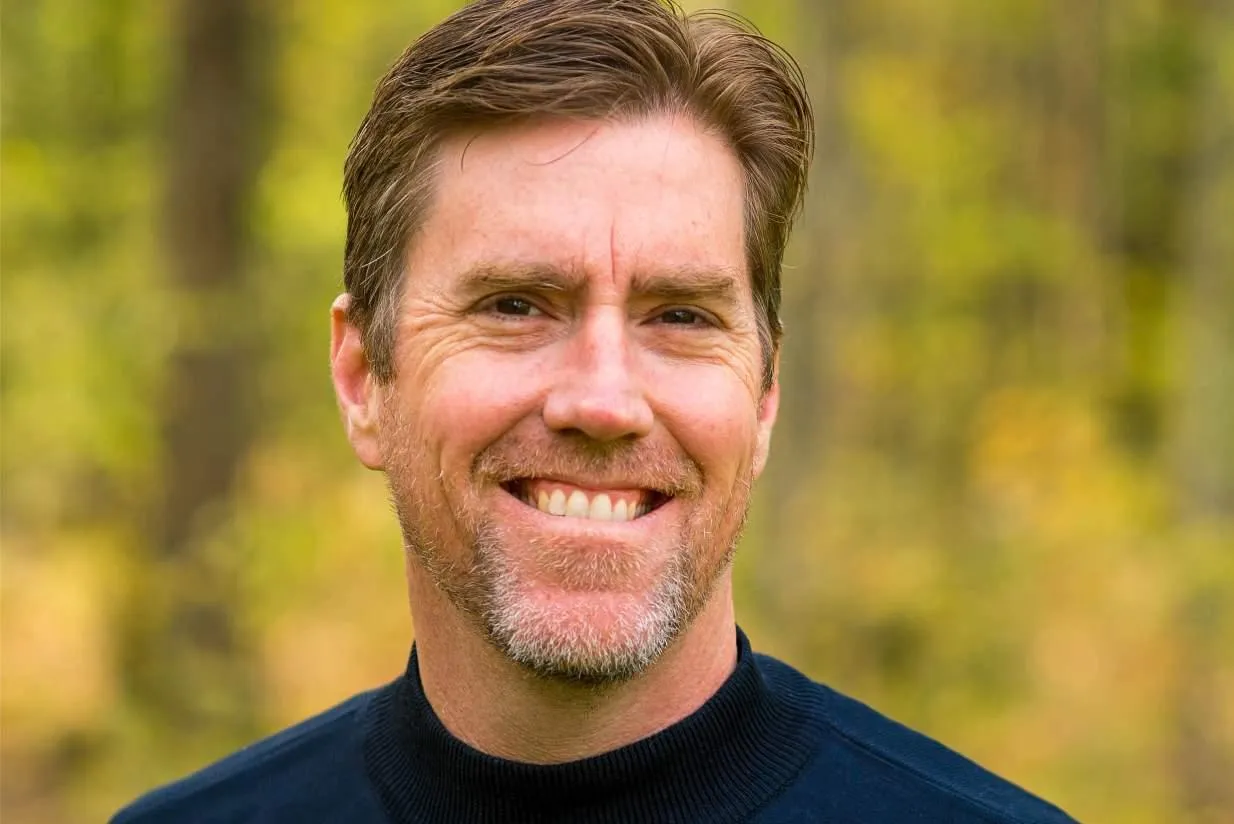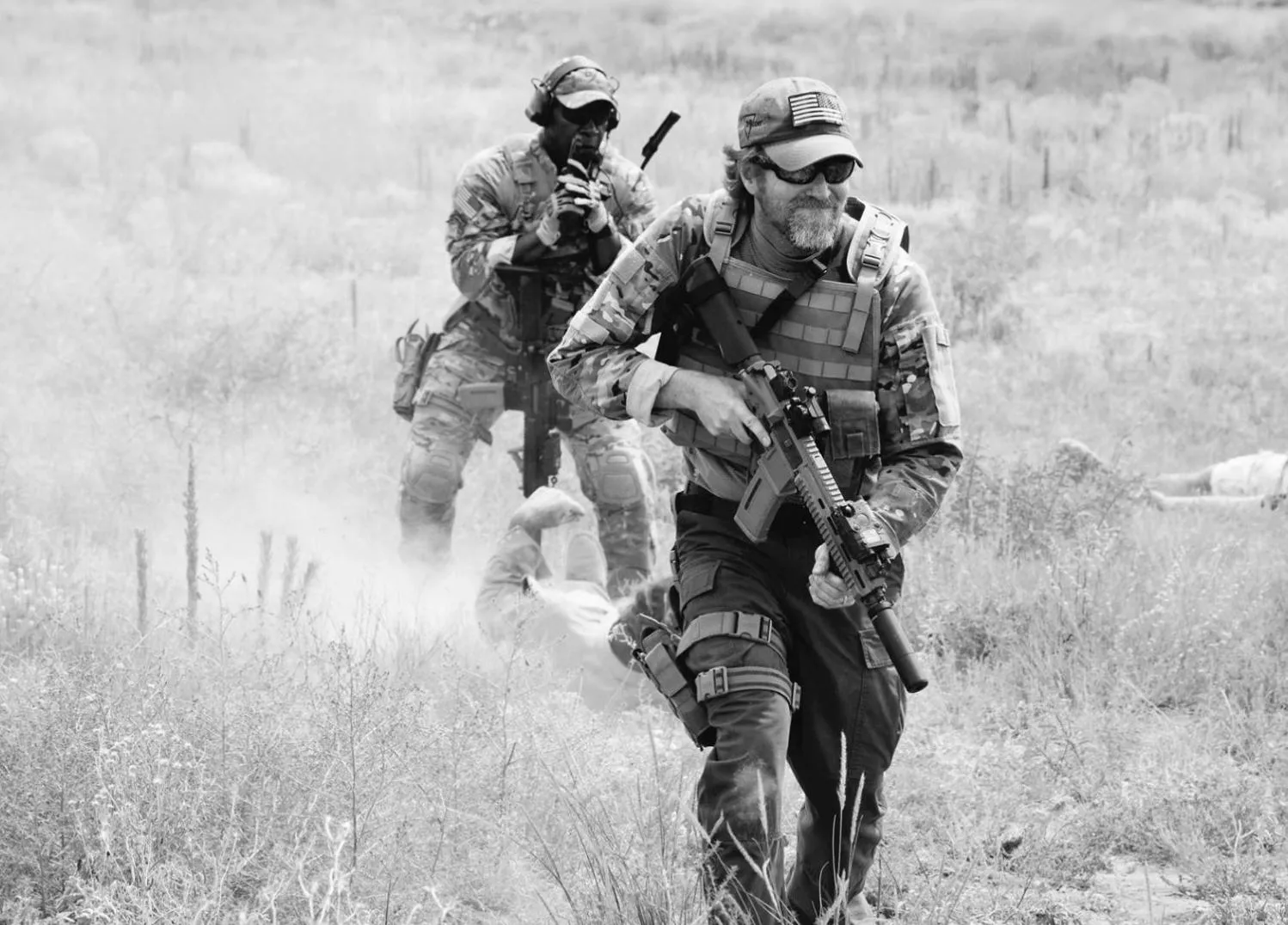Doug Patteson: The Glamorous, Gritty Life of CIA Counterterrorism Operative
Only the elite drove cars when CIA officer Doug Patteson was living in Southeast Asia, so his Western vehicle stood out like a beacon among the motorcycles and bicycles. Even so, the government surveillance team trailing Doug on their 100cc mopeds had trouble keeping up on highways and would soon lose track of their target.
Doug wasn’t intentionally trying to shake off his minders - he’s trained to operate in hostile environments - but it occasionally happened anyway, to the great annoyance of the surveillance team. They soon came up with a devious way to exact revenge.
“The local service would get mad at me, steal the car mirrors, and we would have to buy them back,” Patteson recalls. It was more expedient than reporting the vandals to the local police and he knew his car mirrors would eventually show up for sale at the local market.
Besides, he figured it was a small price to pay. Doug’s bigger concerns involved threats from Islamic fundamentalists and a Communist guerrilla movement - and for a counterterrorism expert and adrenaline junkie, Southeast Asia was heaven on Earth.

Doug Patteson: born to serve
Doug grew up in Austin, a sixth-generation Texan who read Ian Fleming and Len Deighton spy novels and loved Top Gun (1986). He idolized both of his grandfathers - one was a WWII fighter pilot in Europe and the other worked in Navy Intelligence - so he was intrigued when a CIA recruiter visited the University of Texas.
Doug was an adventurous 21-year-old at the time and imagined a life running spies in dangerous foreign countries. He was a bit more focused on beer and college girls than academics though, so Doug turned on the charm during the interview - an essential tool for a budding CIA case officer. “To my way of thinking, it would be the only kind of job I’d be interested in, which was being out on the street doing the real work of collecting intelligence.”
After graduation, Doug trained at the CIA’s legendary Farm taking a paramilitary course and learning how to work in high-threat environments as well as how to recruit and run assets. "At that time was a paramilitary familiarization course where you learn to shoot, learn to drive aggressively, learn to do land navigation, parachute, and drive boats and all that stuff. That was a ton of fun, physical training every day, getting to really bond well with your teams," Patteson told the True Spies podcast. "And then there's the main course that we all go through as case officers to learn how to recruit and run assets securely and get certified as case officers in that process."
Doug’s first posting in Southeast Asia was in a high-risk city. (He’s still not allowed to name it.) This was in the pre-cell phone ‘80s when physical dead drops were in vogue, so Doug ran around with a pager as he learned the streets, scouted meeting locations, and put his surveillance and tradecraft training to the test.
“I wanted to go to places that were exciting, interesting, and that I had no real experience with - and Asia fit that bill,” Doug said. “I knew I would be able to work some CT (counterterrorism) targets.”

Running spies
He’d spend the next decade working at the CIA, almost all of it overseas running foreign spies during a unique period in history. Doug had grown up as a Cold War kid but in the years after the Berlin Wall fell in ‘89 and the Soviet Union imploded in ‘91 no one was certain who the ‘bad guys’ were any longer.
All of a sudden, Doug found himself at embassy cocktail parties rubbing shoulders with KGB officers or the Palestinian Liberation Organization. Meanwhile, Islamic terrorism was on the rise. It was time for a reset. The spy agencies needed to rethink their roles.
Not all of Doug’s challenges were work-related. Just weeks before his Southeast Asia posting, Doug met his future wife who would become a CIA counterterrorism officer assigned to the Osama bin Laden team. They raised their first child in a country where they suspected they were under surveillance 24/7 - one of their domestic staff was even approached to spy on them - and, much like The Americans TV series, they’d eventually need to explain to their children what they really did for a living.

Challenges in the shadows
Running spies can also throw up ethical dilemmas, including one particularly thorny task when Doug had to ‘terminate an asset’ - spy-speak for firing a foreign operative who’d supplied useful intelligence to the CIA for 20 years. Agency priorities shifted during that lengthy period, budgets shrunk, and the CIA decided they could only pay a quarter of the severance package they’d promised their asset decades earlier.
It was up to Doug, who was still finding his footing as a junior officer, to deliver the bad news: “It wasn't a comfortable experience. I actually cared about the individual. I wanted to make sure that he was okay. I wanted it to go well. This guy had been run by us for a long time.”
Luckily, Doug’s source was a pragmatic man who accepted the revised payoff with grace. It’s an experience Doug took with him into the business world when he left the CIA, earned his MBA at Wharton, and moved into corporate America. He still approaches difficult discussions with empathy and respect, explaining why he’s acting in a particular way. He also still keeps one foot in the shadows, consulting for companies on security, intelligence, firearms, and hostage advocacy, as well as advising on entertainment projects, spy documentaries, and working with the writers on CBS’s S.W.A.T. series.
While life at the CIA may not mirror a Hollywood movie (nobody ever slogs through paperwork on the big screen) some films still resonate with Doug, including Philip Seymour Hoffman’s moody turn in A Most Wanted Man (2014) about a covert German team recruiting local informants with ties to Islamic terrorist organizations.
"The brand new social experience where you activate your gaming skills as you train like a spy."
- TimeOut
Take on thrilling, high-energy espionage challenges across different game zones.

Counterterrorism on the sidelines of 9/11
After a decade at the Agency, Doug was ready for a new challenge. He had no interest in the next logical step in his CIA career - managing staff at Langley HQ: “That sounded like a death sentence to me.”
So after two years of business studies at Wharton, Doug was excited to be starting his new job. In September 2001, however, the World Trade Center and Pentagon were hit in the deadliest terrorist attacks in history. Patteson, who’d been chasing terrorists for a decade, suddenly found himself on the sidelines during 9/11.
“It was hard. I called my wife that morning and when she picked up the phone the first words out of her mouth were, ‘It’s bin Laden.’ She knew. She’d been studying him for several years. She was pregnant with our third child - who would be born about six weeks after 9/11 - and I had just started a new job. I was out of government service and making much better money than I’d be making in government service.”
For weeks, he debated returning to work at the CIA but felt that he’d paid his dues. “I knew the toll that would come with wartime tours,” he said, and ultimately, Patteson decided he didn’t want to be a CIA officer in Afghanistan working 6,500 miles away from his newborn child and young family.
The apple never falls far from the tree though. In addition to his many business and entertainment projects, for the last four years Doug has also been Adjunct Professor Patteson at the University of New Hampshire (Manchester). He teaches Issues in Intelligence Collection, the History of Espionage, and - perhaps unsurprisingly - a course in Counterintelligence. All of his teaching materials and slide decks must be pre-cleared through the CIA.

From the CIA to Hollywood
Doug is also a Hollywood producer overseeing Cold War documentaries among his many other projects. He’s built a network of military veterans who he hires to work on film and TV projects, people who already know how to handle a weapon or wear a uniform, to give the projects authenticity.
Back in 2015 he even starred in a movie, Texas Zombie Wars.
“That was actually my first introduction to working in Hollywood and it was a really fun learning experience, learning about independent film and film production because I had never been on a set before,” Doug said.
“It also helped me learn that I am not a guy who has any desire to be in front of the camera. I have no burning desire to be an actor. If I am forced to do it, I can figure it out, but it is not my happy place.”
Doug’s happy place is teaching, consulting on corporate and entertainment projects, and relaxing at home with his wife, who also retired from the CIA to raise their four children.
***
SPYEX consultant Doug Patteson is an expert on security, intelligence, firearms, and hostage advocacy, as well as entertainment. He can be booked at SPYEX.com to appear at events or consult on business and entertainment projects.
SPYSCAPE+

Join now to get True Spies episodes early and ad-free every week, plus subscriber-only Debriefs and Q&As to bring you closer to your favorite spies and stories from the show. You’ll also get our exclusive series The Razumov Files and The Great James Bond Car Robbery!


Gadgets & Gifts
Explore a world of secrets together. Navigate through interactive exhibits and missions to discover your spy roles.
Your Spy Skills
We all have valuable spy skills - your mission is to discover yours. See if you have what it takes to be a secret agent, with our authentic spy skills evaluation* developed by a former Head of Training at British Intelligence. It's FREE so share & compare with friends now!
* Find more information about the scientific methods behind the evaluation here.


Stay Connected
Follow us for the latest
TIKTOK
INSTAGRAM
X
FACEBOOK
YOUTUBE